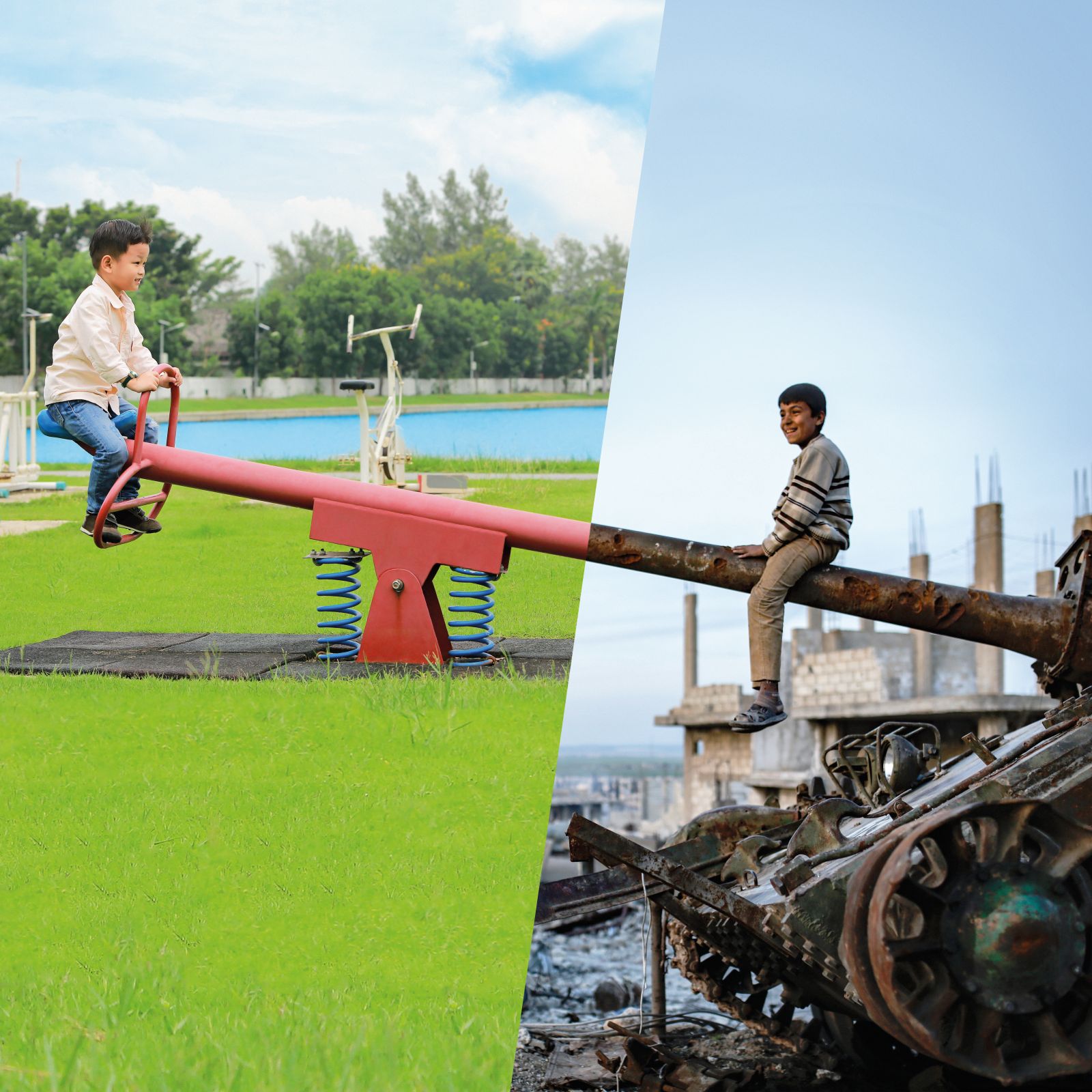Looking for summer city options? There’s no shortage, and the 24th Triennale Milano International Exhibition, titled “Inequalities”, which opened its doors on May 13, 2025, and will be on view until November 9, 2025, is one of them (free admission for all visitors in August).
This 2025 edition concludes an exhibition trilogy that began in 2019 with “Broken Nature” and continued in 2022 with “Unknown Unknowns”. Now, “Inequalities” focuses on the human dimension, addressing an urgent and political issue: the growing inequalities that characterize cities and the contemporary world. This theme takes on a new significance in Milan, a city currently marked by (largely alleged) scandals related to urban planning and real estate management.
To tackle the broad and complex theme of inequalities, Triennale Milano has gathered thoughts, ideas, and proposals from researchers, creatives, and scholars from various disciplines and geographical backgrounds. The exhibition maintains two main directions:
- Geopolitics of Inequalities: the ground floor of the Palazzo dell’Arte is dedicated to this dimension, focusing primarily, but not exclusively, on the world of cities and, in particular, on the new meaning that the opposing terms of “wealth” and “poverty” have assumed today in different spheres of urban life.
- Biopolitics of Inequalities: the first floor, on the other hand, explores the biopolitical implications of social, economic, and gender inequalities. It examines habits, lifestyles, and life expectancies in contemporary societies, starting from the observation of biodiversity in and among social bodies, and considering their different mobility in space.

Exhibitions and special projects: an atlas of reflections and proposals
The 24th International Exhibition is first and foremost a collective project. Through exhibitions, special projects, international participations, performances, and public program events, it questions global challenges related to differences present in various spheres of existence: from economic to ethnic, from geographic origin to gender. It brings together 28 curators of exhibitions and special projects, involving 341 authors from 73 countries, covering a total of 7,500 square meters of exhibitions and installations, designed by six design studios. Among the themes and exhibitions, the following stand out:
- Cities: this exhibition investigates how cities have become places where inequalities grow more rapidly and evidently, despite their potential to reduce imbalances. Through 35 site-specific installations, created by as many authors from over 30 nationalities, it proposes a collective reflection on the evolving dialectic between wealth and poverty, society and community, ecology and cities. Within this exhibition are special projects such as:
◦ The Book of Amos (a film by Amos Gitai): filmed in Tel Aviv, actors from Israel and Palestine play the prophet Amos, giving a contemporary voice to his ancient denunciation of corruption and social injustice. The film reflects on conflict as inevitable and the city as a theater of literal and metaphorical wars.
◦ Grenfell Tower. Total System Failure (curated by Kimia Zabihyan, Grenfell Next of Kin): this installation highlights the struggle and courage of those who resist in the aftermath of the devastating Grenfell Tower fire. It criticizes state and corporate negligence and the continuing failure of European governments to standardize cladding systems that contributed to the fire’s rapid spread. The installation includes works by Chris Ofili, Khadija Saye, Noel Douglas, and the Grenfell Memorial Quilts.
- The Space of Inequalities. Environment, Mobility and Citizenship (curated by DAStU and CRAFT, Politecnico di Milano): this section explores inequalities from a territorial perspective, focusing on the uneven impact of extreme climate events, disparities in access to resources and mobility restrictions, and the denial of full citizenship rights due to exclusion from housing and public services. The project uses an immersive installation with three short films and a model of the Milan metropolitan area with data projections.
- Atlas of the Changing World (curated by Maurizio Molinari): this exhibition displays maps illustrating the multiplication of conflicts and the different interpretations of the present by the United States, Russia, China, and Europe. It explores pressing issues such as inequalities, gender disparities, migrant flows, and climate change. The maps are reworks based on Maurizio Molinari’s volumes.
- Shapes of Inequalities (an installation by Federica Fragapane): this project uses data visualization to explore the many facets of inequality, showing how data can reveal deep asymmetries, distances, and differences in scale. It represents data with “organic forms,” aiming to humanize the statistics and convey the “pulsating and sometimes barely visible presence” of the people and beings connected to the data.
- Radio Ballads (curated and produced by Serpentine): conceived by Serpentine in London, this project shares collaborative commissions exploring stories about labor, care, and community. It asks how we can understand, listen, learn, and heal through collective storytelling, focusing on structures of care and the voices of communities. Works by Sonia Boyce, Helen Cammock, Rory Pilgrim, and Ilona Sagar are featured.
- Milan. Paradoxes and Opportunities (project coordinated by Seble Woldeghiorghis, curated by Damiano Gullì and Jermay Michael Gabriel): this exhibition analyzes how economic and social disparities in Milan have deepened, resulting in an increasingly fragmented urban fabric. Based on urban data analysis by the SI Lab at Università Bocconi, it identifies six major paradoxes and pairs them with artistic interpretations, aiming to stimulate reflection on the city’s inclusive future.
- Towards a More Equal Future (curated by Norman Foster and the Norman Foster Foundation): this exhibition presents projects by the Norman Foster Foundation (NFF) that seek to address social and environmental inequality through design and education. It showcases solutions for transforming informal settlements in India, regenerating war-torn cities like Kharkiv, providing alternatives to tents for refugees, creating ultra-low-cost housing, and developing new concepts for clean energy and industrialized building blocks.
- 471 Days (an installation by Filippo Teoldi): this powerful installation captures the 471 days of the Gaza conflict from Hamas’s attack on October 7, 2023, to the fragile ceasefire on January 19, 2025. It uses vertical fabric columns descending from the ceiling, one for each day, with lengths representing reported deaths. Satellite images of destroyed sites and personal stories are juxtaposed with the statistics to humanize the impact of the conflict.
- Portraits of Inequalities. Pittura di classe (curated by Giovanni Agosti and Jacopo Stoppa): this installation features thirty portraits of benefactors of Ca’ Granda, Milan’s main hospital, from its unique collection. It reflects on how privileged classes have been portrayed over centuries and contrasts them with a representative of another social class, depicted by Giacomo Ceruti, known as the “Homer of the poor”.
- We the Bacteria: Notes Toward Biotic Architecture (curated by Beatriz Colomina and Mark Wigley): this exhibition reflects on inequalities through the concept of health and the microbiome, exploring how health is increasingly understood in terms of the trillions of microbes that inhabit us2729. It presents an alternative history of architecture from the perspective of microbes and proposes new ways of living with them. The exhibition includes the special project The Corner Problem (a film by Diller Scofidio + Renfro, directed by Elizabeth Diller) which explores how 90-degree interior corners in modern architecture become micro-environments where bacteria and dust accumulate, challenging the illusion of human mastery over constructed environments.
- A Journey into Biodiversity. Eight Forays on Planet Earth (curated by Telmo Pievani): this exhibition explores biodiversity through “cities” broadly defined as organized communities, including octopuses, beavers, mushrooms, and humans. Each “city” offers a sensory immersion, conveying a key concept of biodiversity, utilizing organic materials that will return to nature’s cycle.
- The Republic of Longevity. In Health Equality We Trust (curated by Nic Palmarini with Marco Sammicheli): this exhibition addresses the profound structural shift towards a longevity society, where five generations coexist. It challenges the medicalization of aging and the inequalities that restrict access to healthy living, proposing simple daily practices as powerful instruments for democratizing health and narrowing the wellbeing gap3335. Its five “Ministries”—Purpose, Sleep Equality, Food Democracy, Physical Freedom, and Togetherness—underscore this approach.
- Not for Her. AI Revealing the Unseen (a project by Politecnico di Milano, conceived by Donatella Sciuto): this installation uses artificial intelligence to bring to light gender disparities in the work environment. It creates a “perceptual transformation” where reflections give way to opacity, materializing invisible barriers and challenging ingrained beliefs37. It emphasizes AI as a tool for change, not a threat.
- Clay Corpus (a work by Theaster Gates): this exhibition explores the power, dignity, and humanity of everyday objects through the practices of two master craftsmen: the late Japanese potter Yoshihiro Koide and Italian designer Ettore Sottsass. Gates, as the steward of Koide’s ceramic wares, echoes the architecture of Tokoname’s Sanpomichi path, making visible ancestral practices and elevating humble materials to archives of achievement.
- The Fragility of The Future (a work by Jacopo Allegrucci): this series of monumental papier-mâché animals conveys an urgent reflection on the fragility of our ecological reality and inequalities in our relationship with the natural world. The sculptures—a whale, an elephant, a giraffe, and a hippopotamus—symbolize grandeur at risk of extinction and the vulnerable, temporary condition of matter.

International Participations: a global dialogue on cities
As with past editions, “Inequalities” includes a section dedicated to international participations. Given that urban contexts are where inequalities are growing fastest, each national pavilion focused on a specific city to build a choral reflection, seeking to identify the most advanced policy proposals for each context.
In summary, the 24th International Exhibition “Inequalities” is an invitation to examine one of the most pressing challenges of our time. It explores not only existing gaps but also potential pathways to a more balanced and inclusive future. It is a laboratory of ideas and proposals that aims to transform inequalities into fertile differences, building a world of shared qualities that enable diverse individuals to exchange values and enrich one another.


